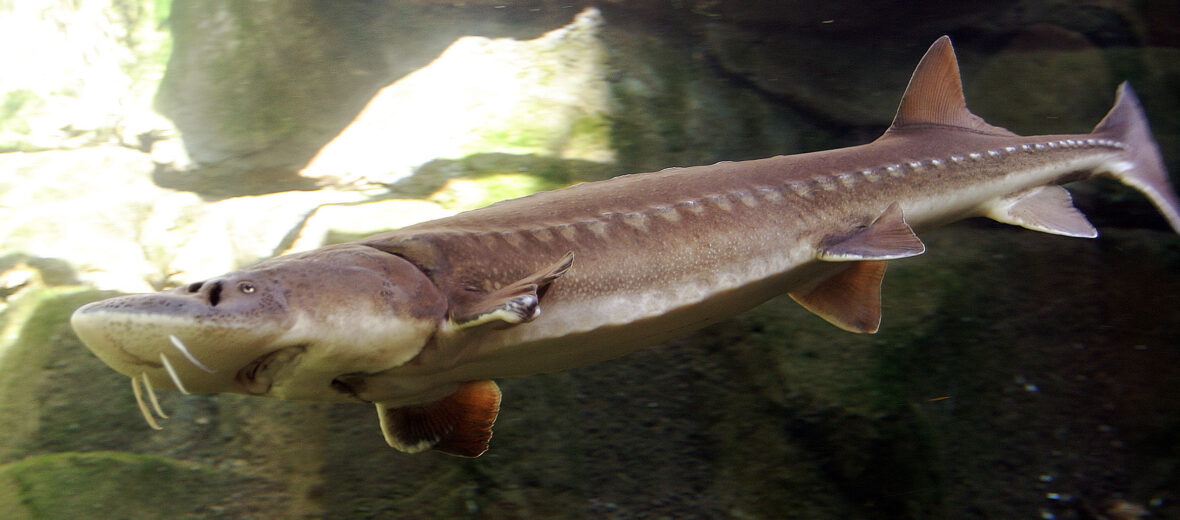
Existing for around 245 million years, the lake sturgeon fish is a prehistoric relic. This fish itself has been found to live up to 152 years old. These large freshwater fish can be found in the Hudson Bay, the Mississippi River, and the Great Lakes. These giants prefer large river and lake systems up to 30 feet deep, but can also be found in brackish (mildly salty) water too. During the 20th century they were brought to near extinction at the hands of overfishing (for their oil – used in motor boats) and exploited for the delicacy caviar (fish eggs). They are now listed as Least Concern by the IUCN. However, these fish still suffer from habitat loss (due to hydroelectric dams), invasive species, disease, and water pollution; to name a few obstacles.
First the Stats…
Scientific name: Acipenseridae
Weight: Up to 310 lbs.
Length: Up to 5 feet
Lifespan: Up to 152 years
Now on to the Facts!
1.) Lake sturgeons prey on mussels, crustaceans, leeches, small fish, and aquatic snails.
2.) Crayfish and small fish eat the eggs of lake sturgeons. Young sturgeons are preyed on by herons, walleyes, and pike.
3.) The lake sturgeon is an anadromous (lives in both fresh and salt water) bottom feeder that uses its sensitive barbels, much like a catfish, to find prey on the murky bottom.
4.) There are 25 known species of lake sturgeon.
5.) The ancestors of the lake sturgeon had bony skeletons, whereas the modern lake sturgeons have a mostly cartilaginous (made of cartilage – like the flexible part of our nose) skeleton.
But wait, there’s more on the lake sturgeon!
6.) During the mating season, sturgeon fish can be seen tail walking (breaching from the water with just their tail still in the water) and spinning in the air then splashing down into the water.
7.) Spawning takes place between May – June.
Did you know…?
Lake sturgeons reproduce very slowly with females only breeding ever 4 – 8 years. This played a large part in a slow comeback from overfishing and over collection of their eggs.
8.) During the mating season, females migrate to more shallow water with gravel lined bottoms.
9.) Females typically don’t eat during the breeding season.
10.) The female will release up to 800,000 eggs at a time to be fertilized by the male. This is known as external fertilization.
But wait, there’s still more on the lake sturgeon!
11.) These fish don’t have teeth, but rather eat by sucking up their prey and swallowing it whole.
12.) More than half of all the sturgeon species are listed as Threatened or Endangered.
Now a Short Lake Sturgeon Video!
Be sure to share & comment below! Also, check out the Critter Science YouTube channel. Videos added frequently!
Want to suggest a critter for me to write about? Let me know here.



